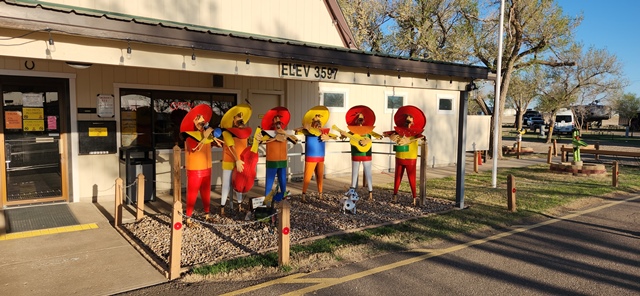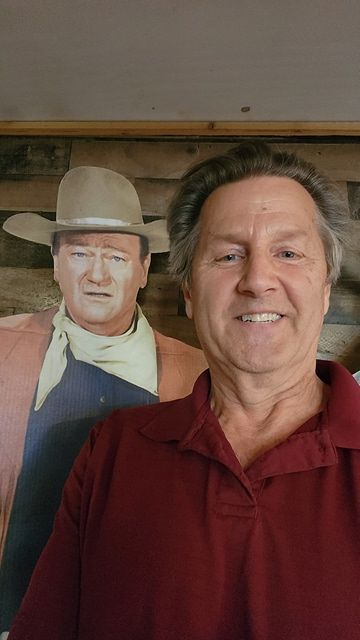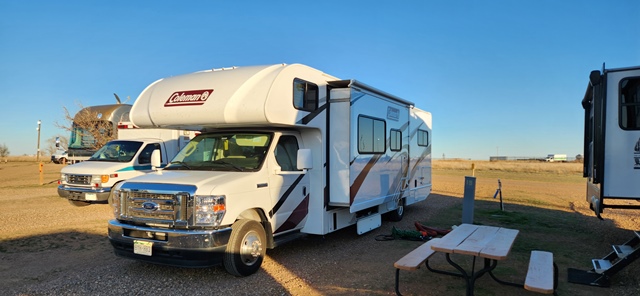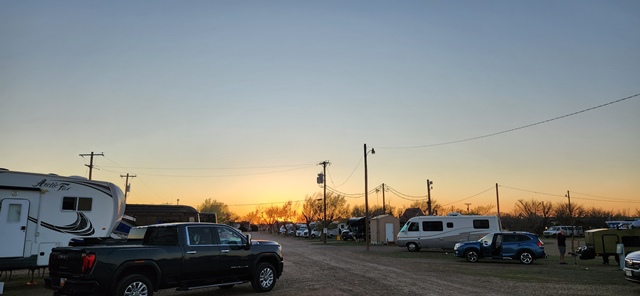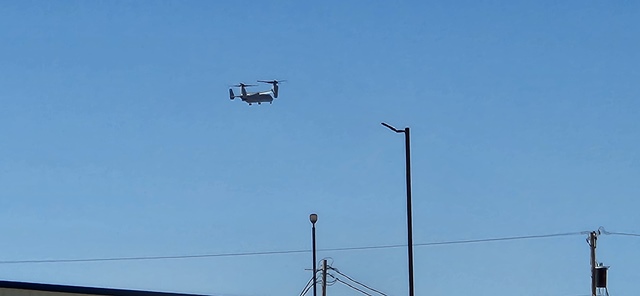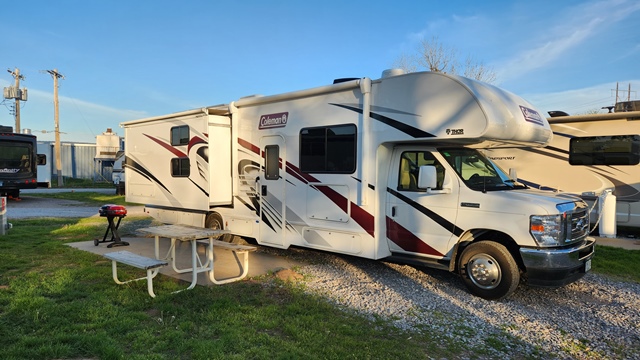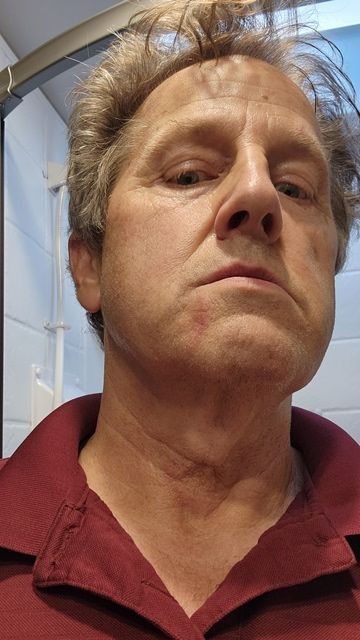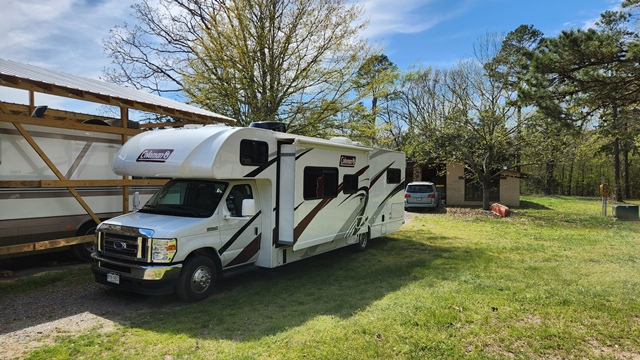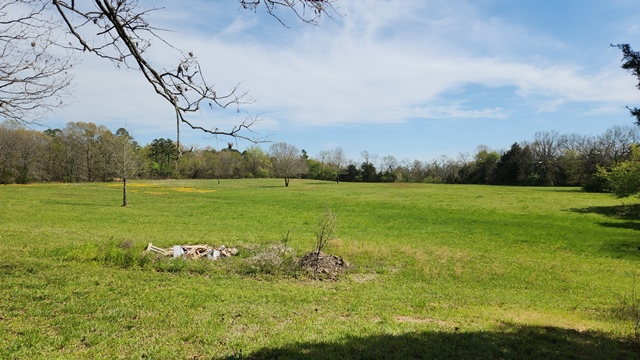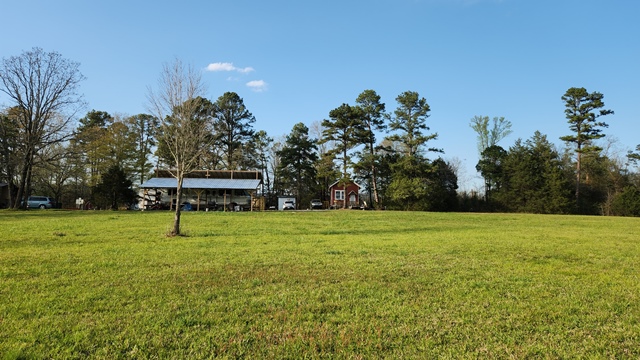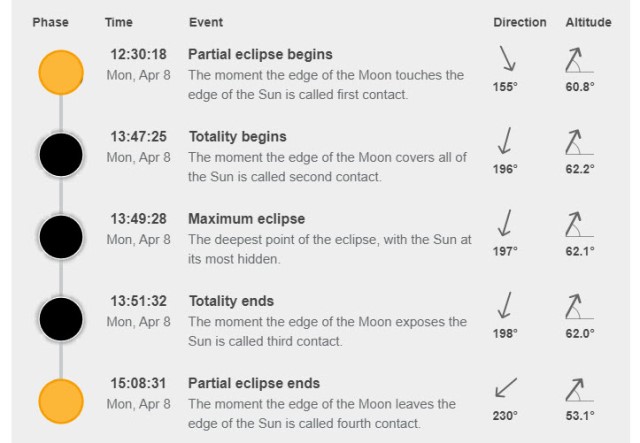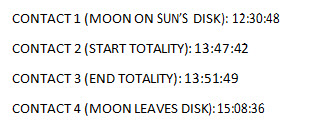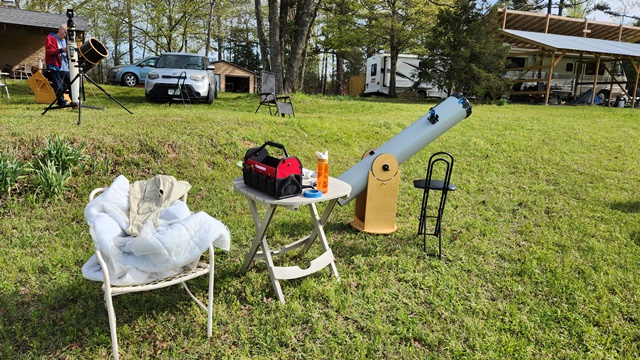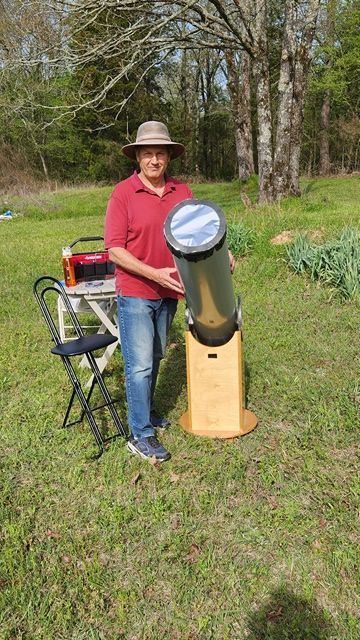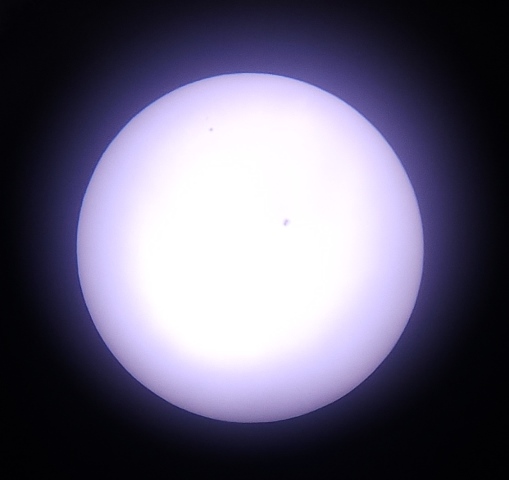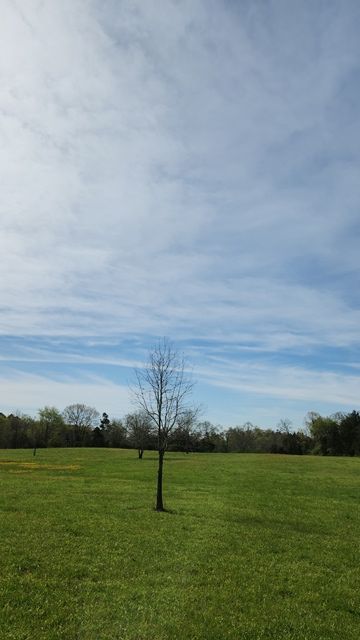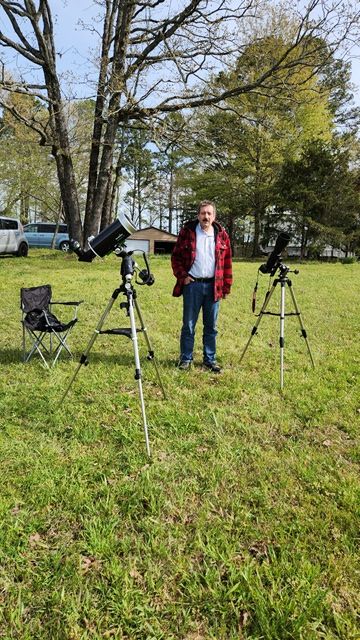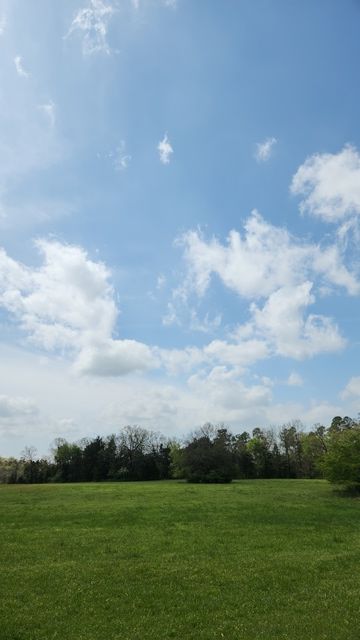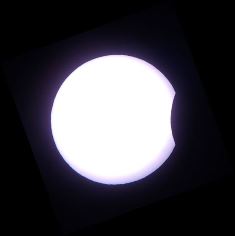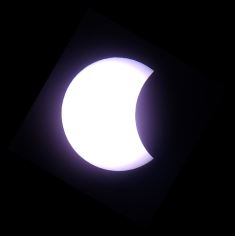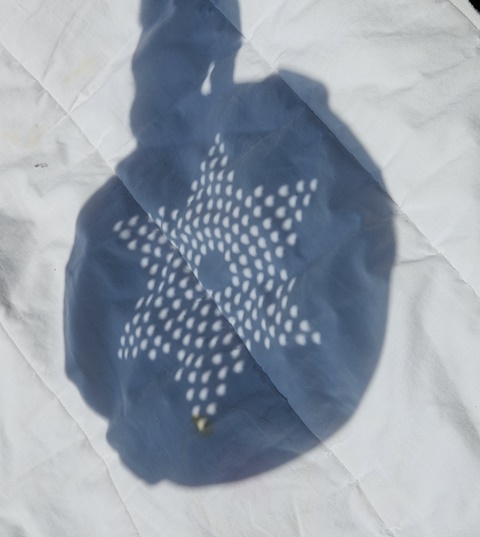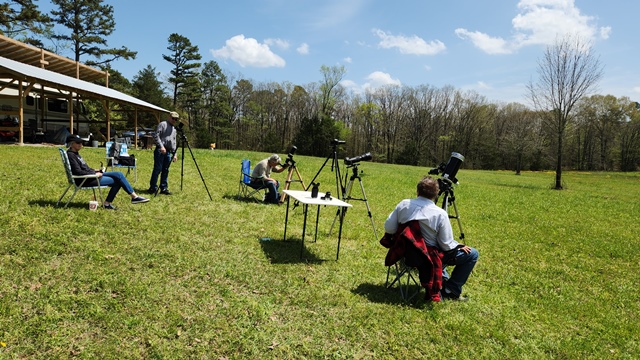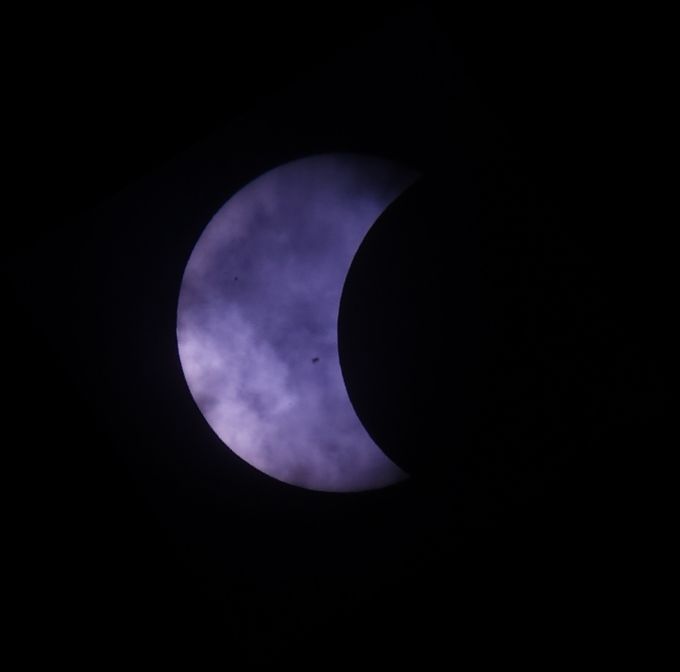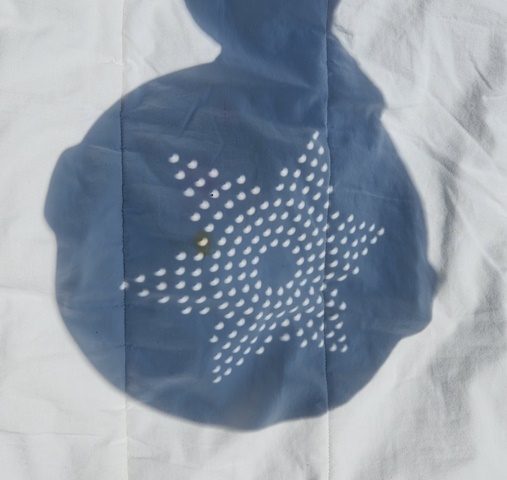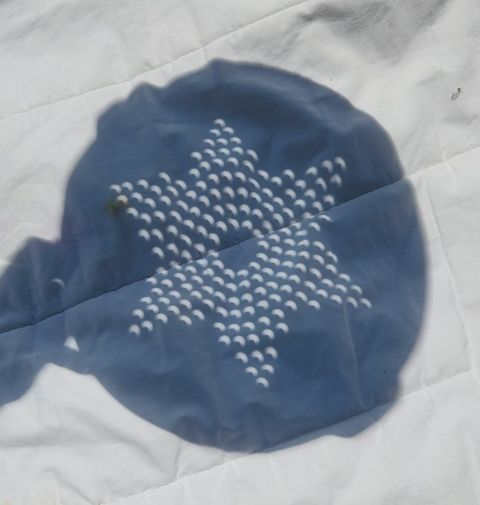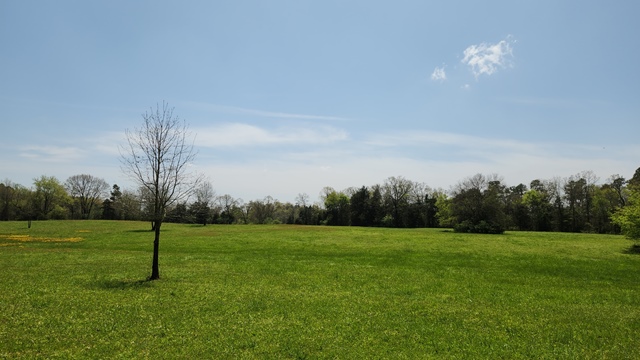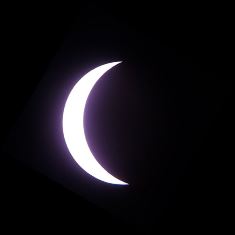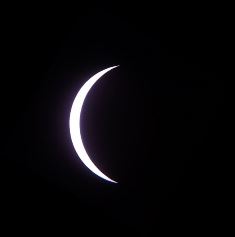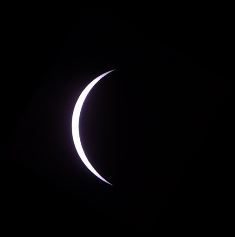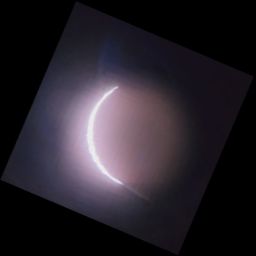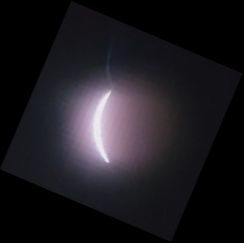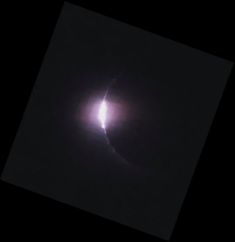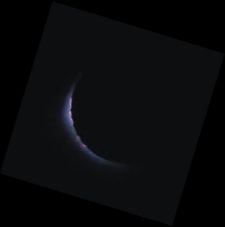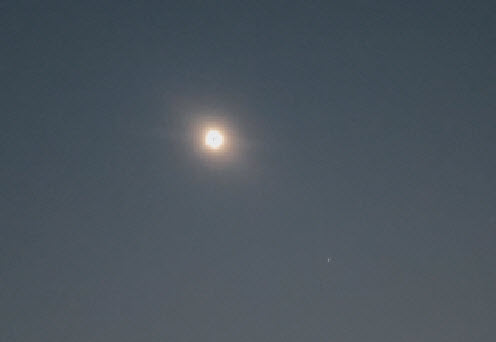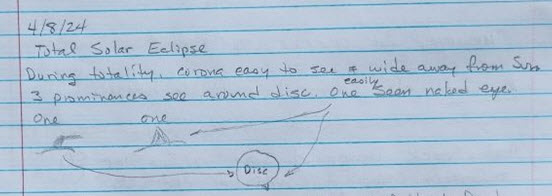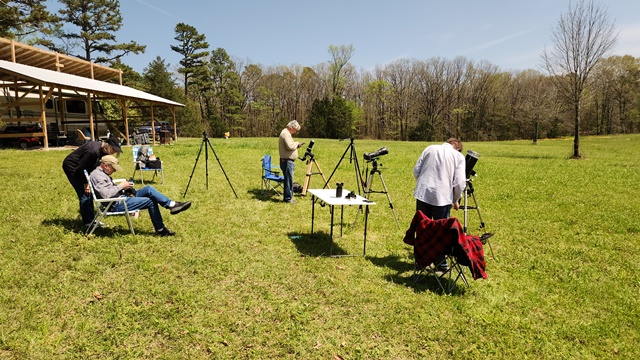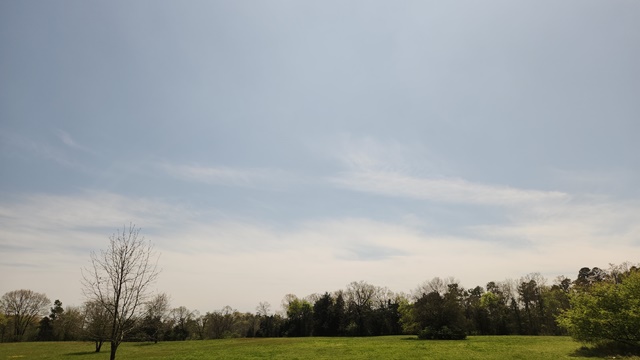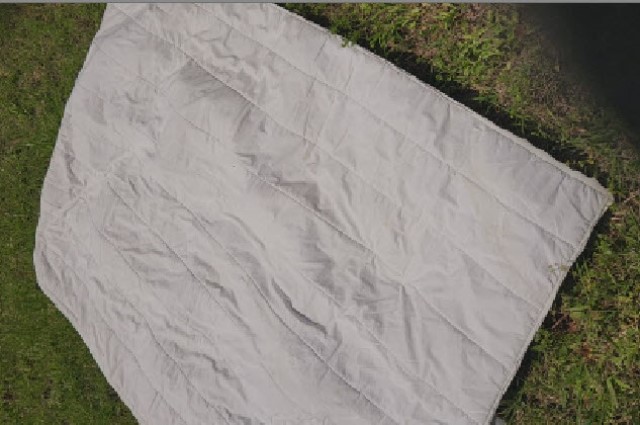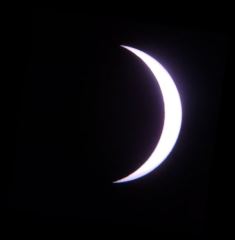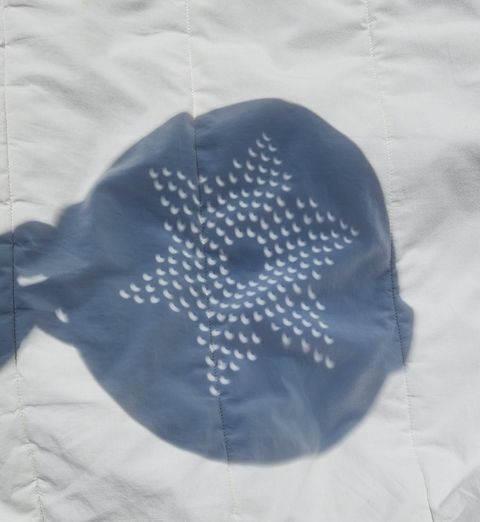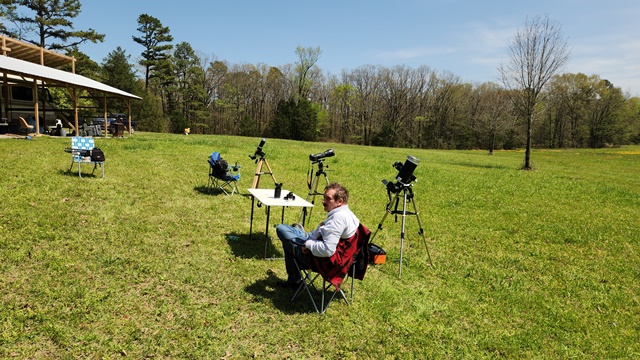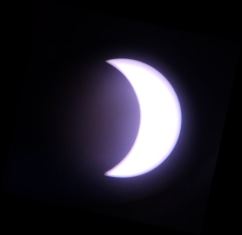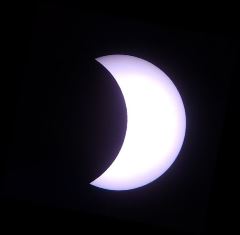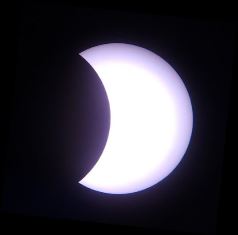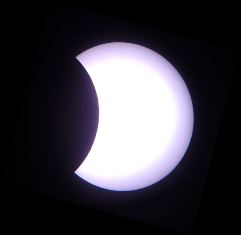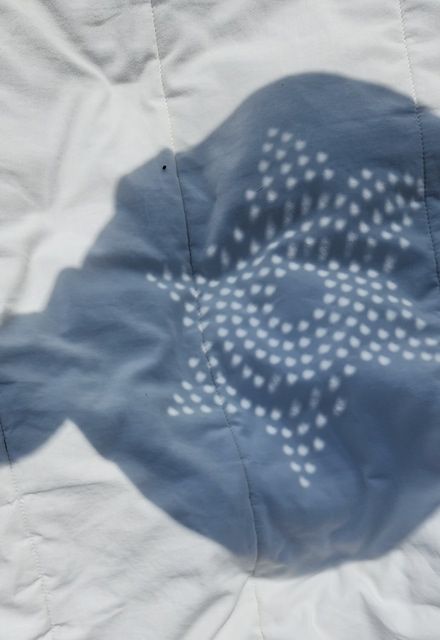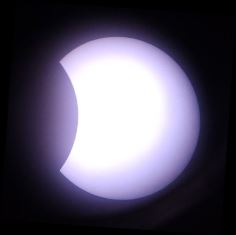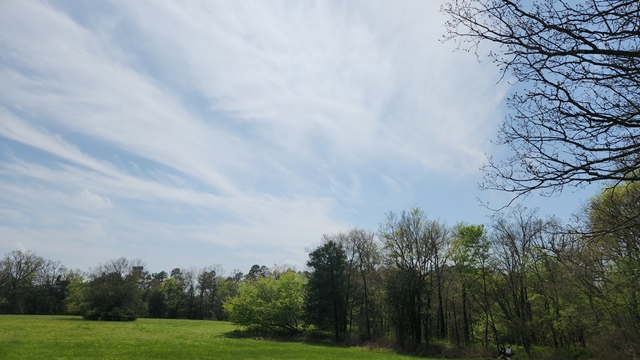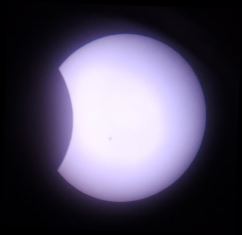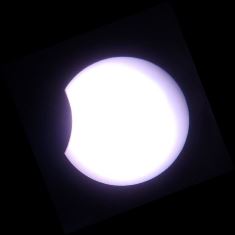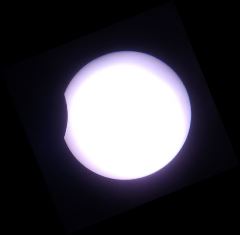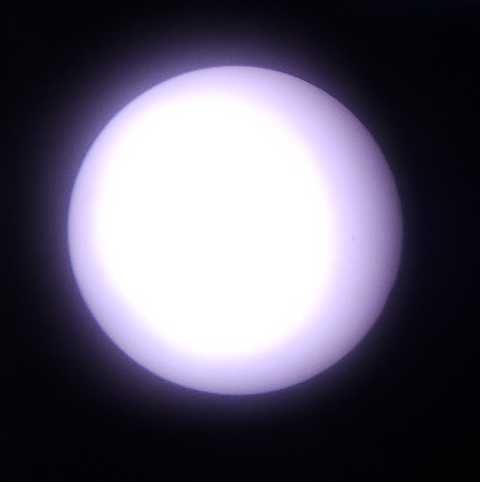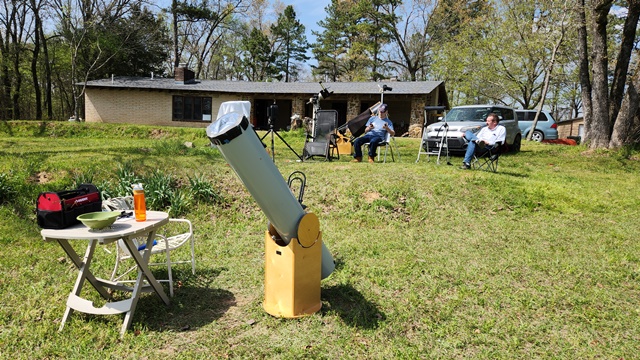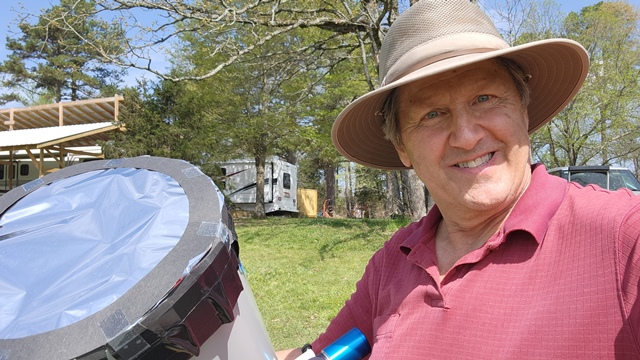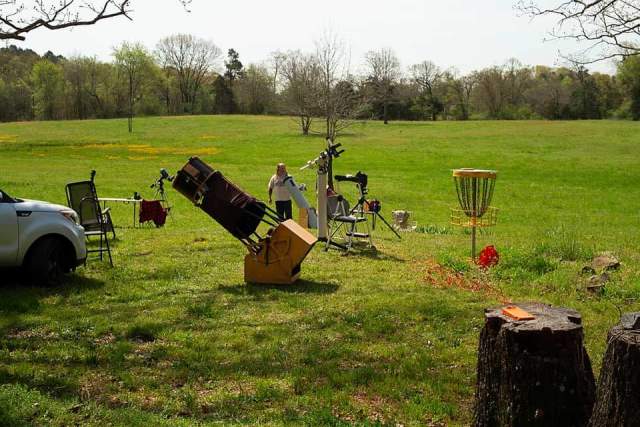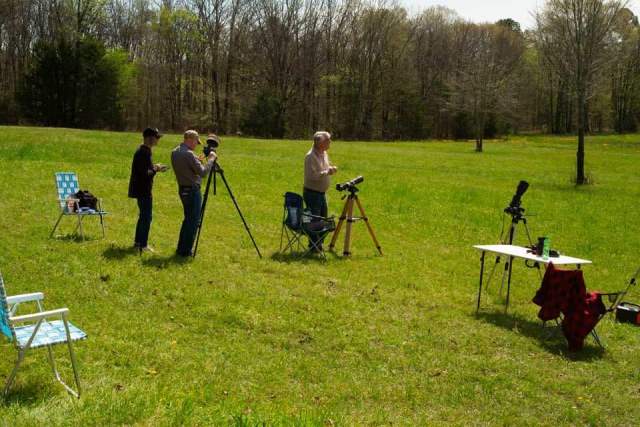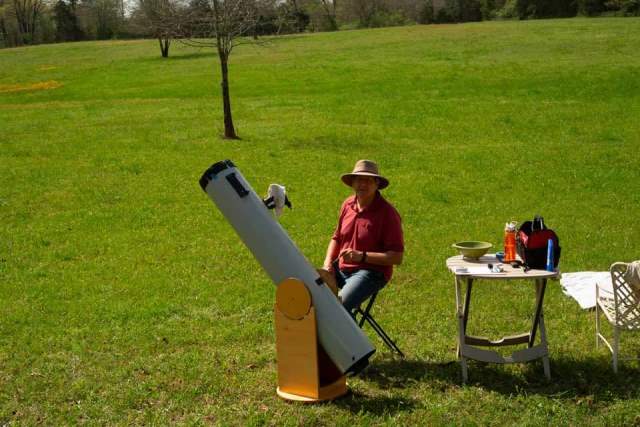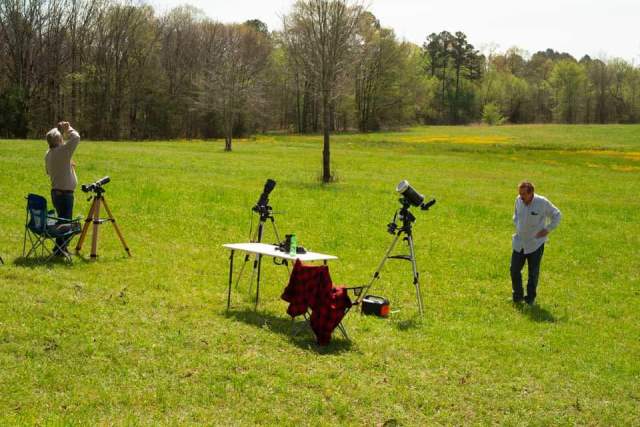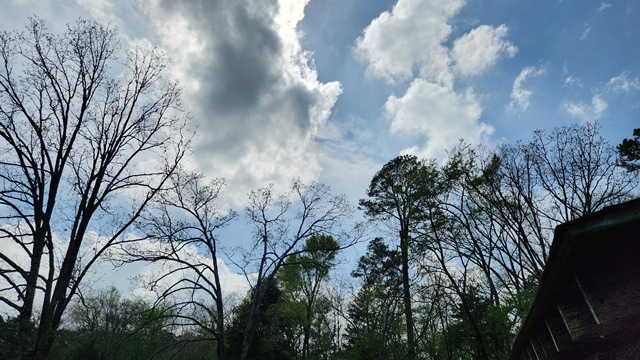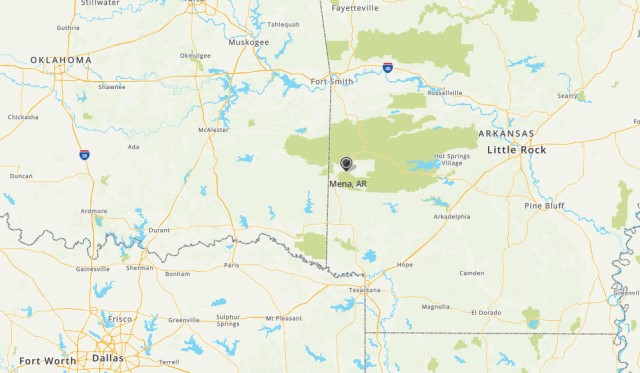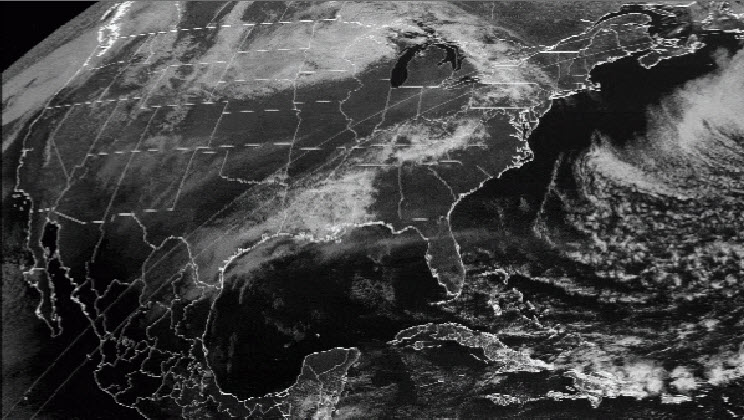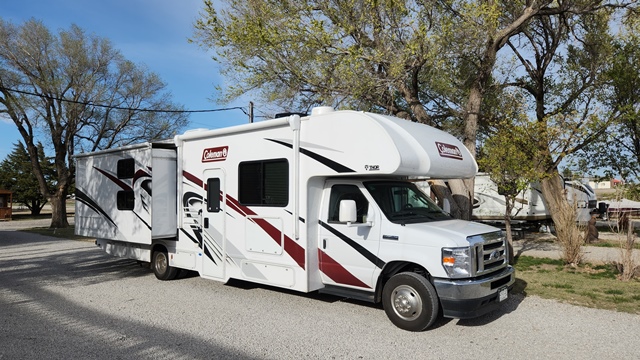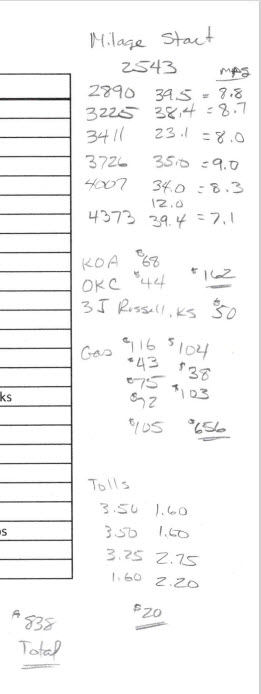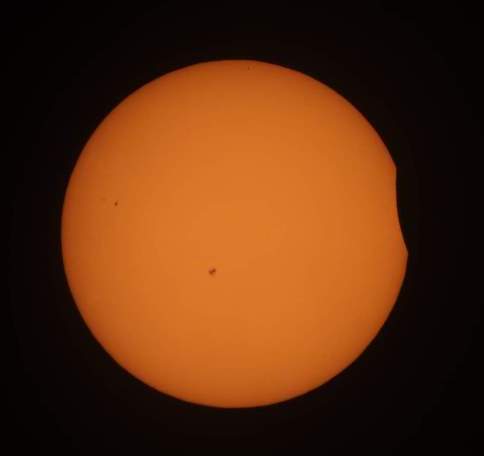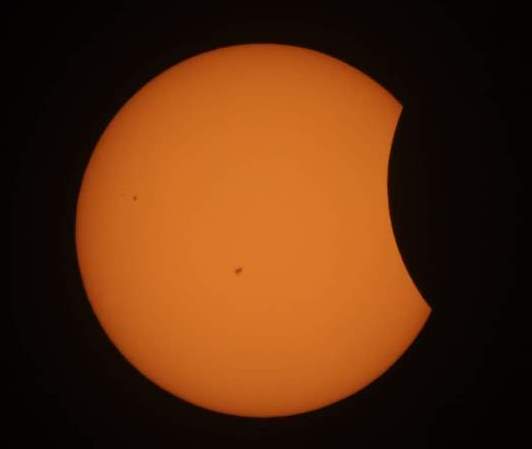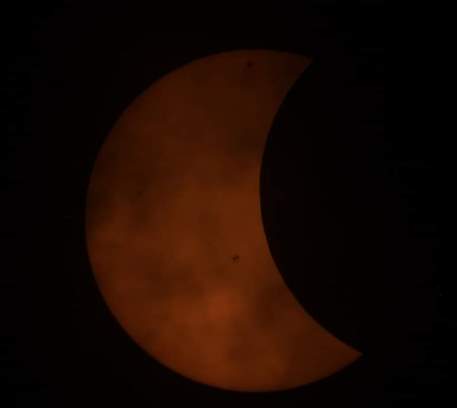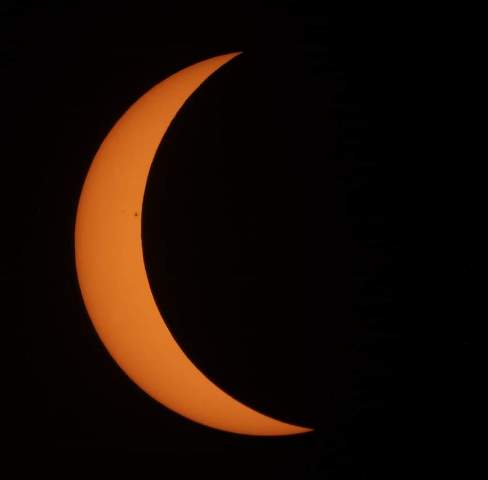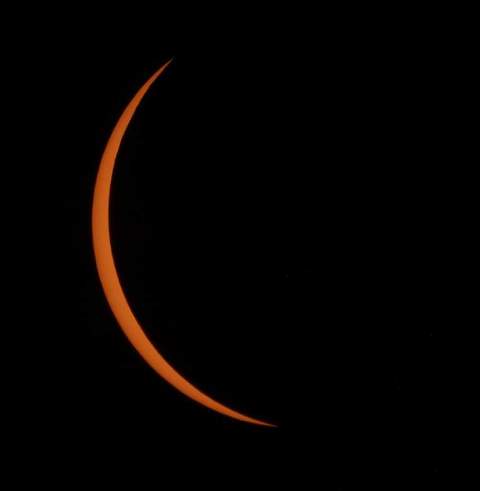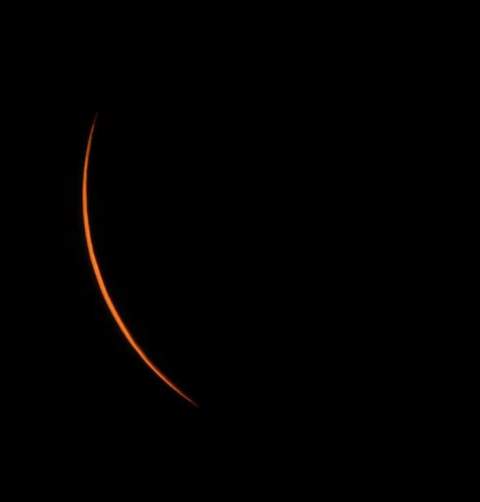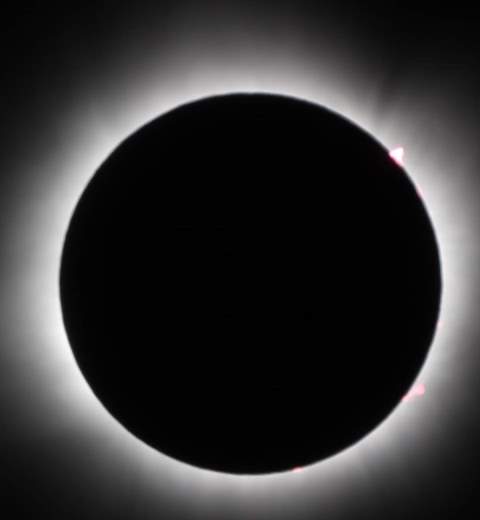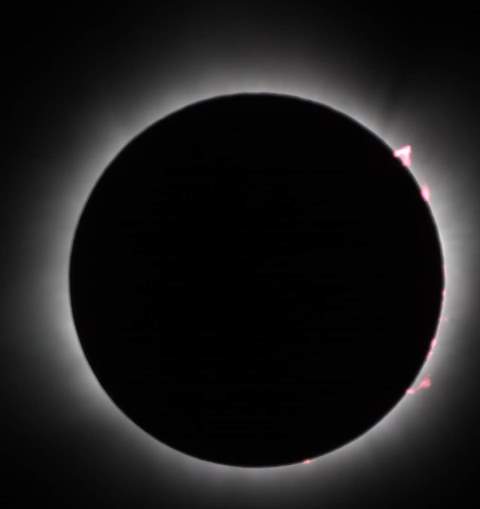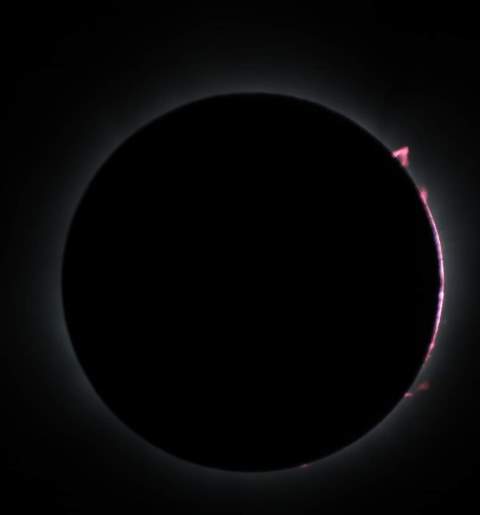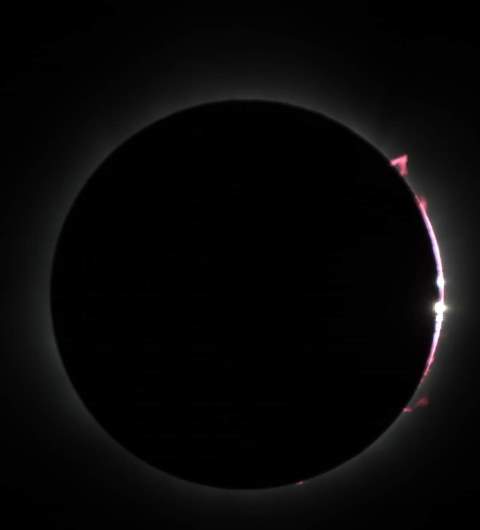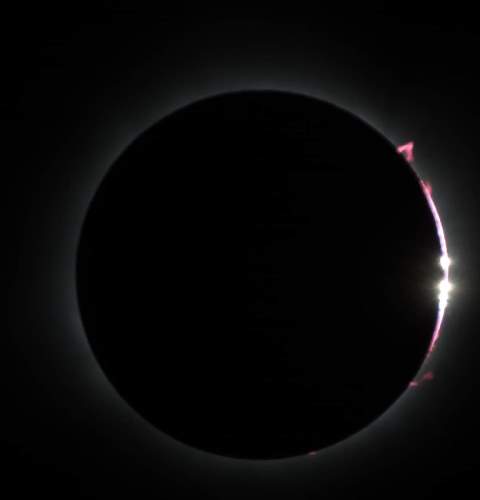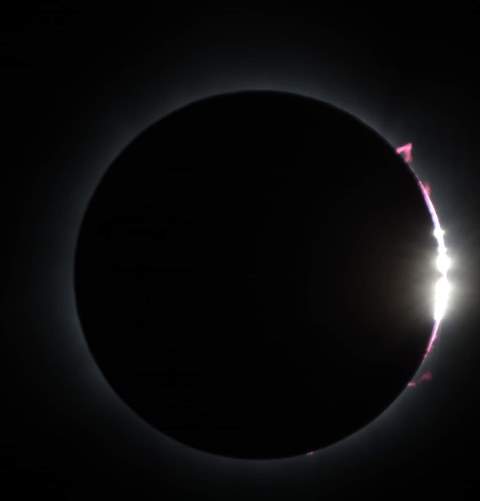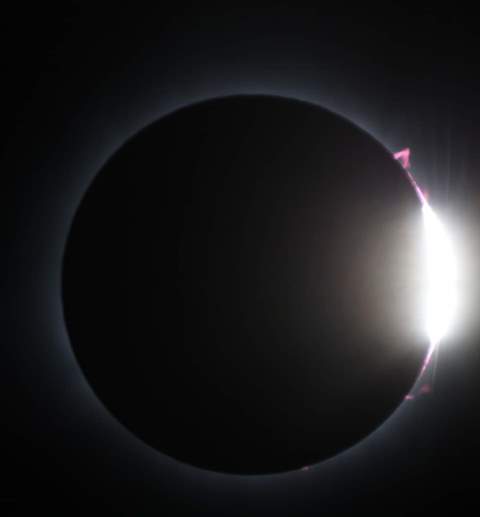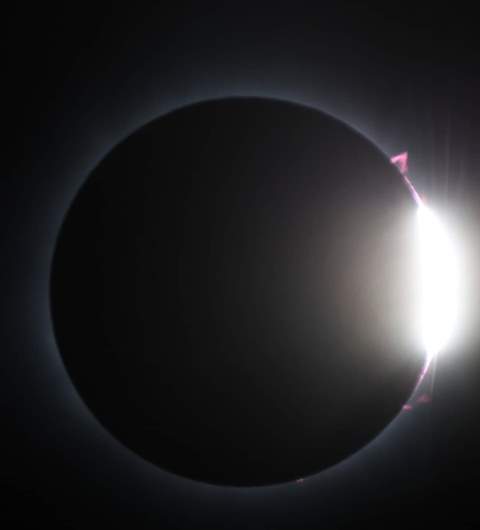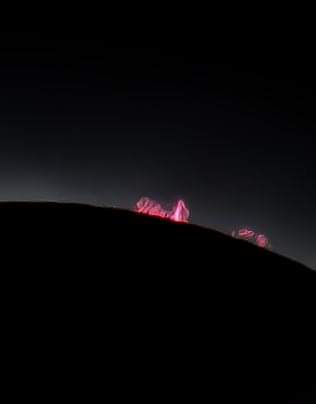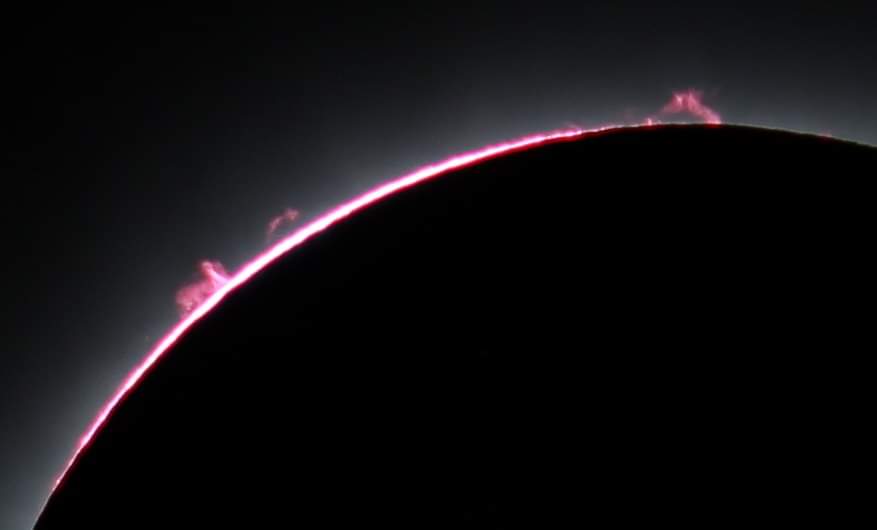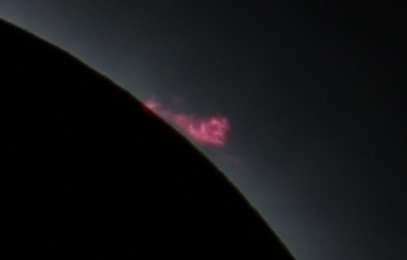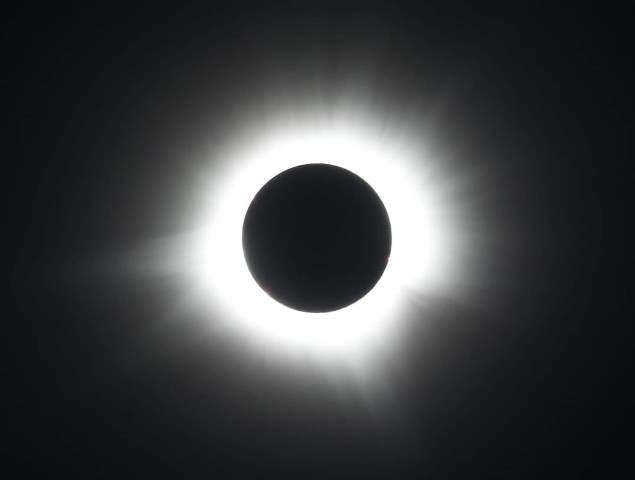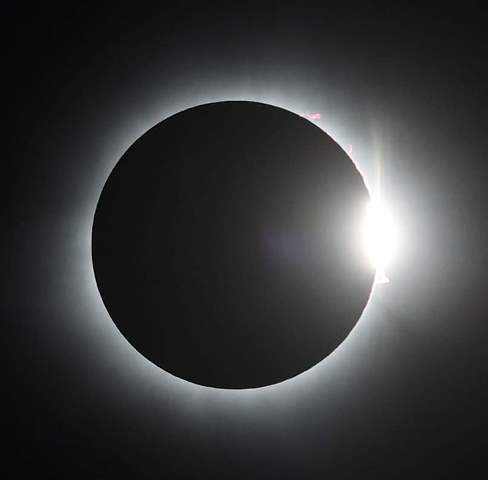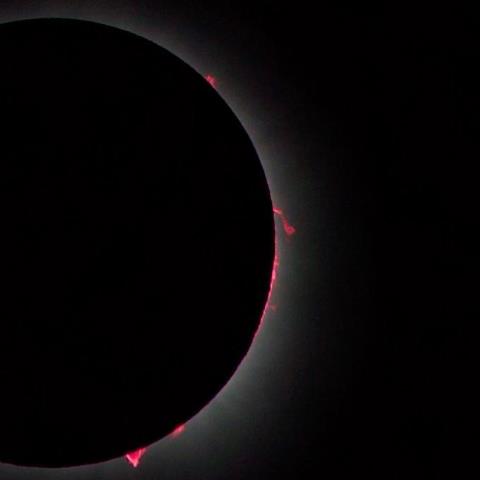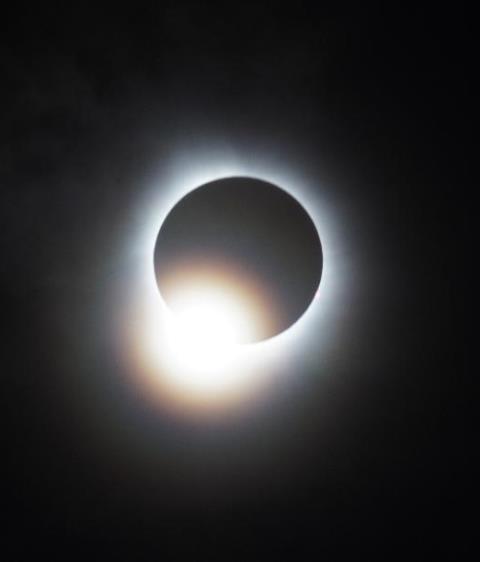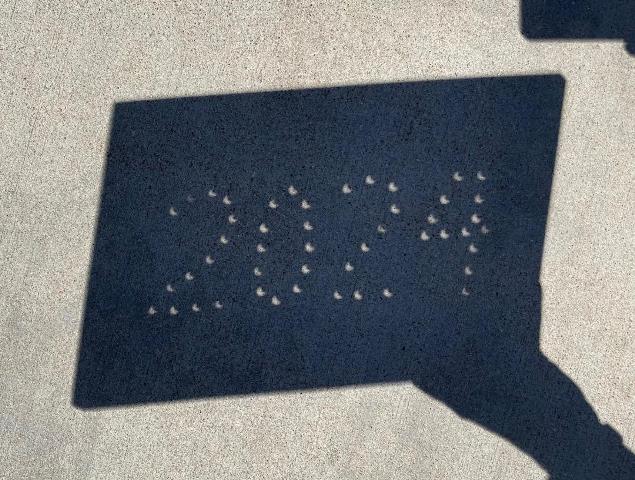The Thursday, April 4, 2024, I drove to the KOA Campground in Amarillo, TX, where I spent the first night.
This is the mariachi band in front of the campground store.
John Wayne was in the lobby. He graciuosly allowed me to take a picture with him.
My campsite
The sky was clear here. I found Comet 12P/Pons-Brooks during Civil Twilight from my campspot. It was low in the northwest sky. I got my 8" telescope out and had a great view of the comet. The observation notes I made can be found here.
The KOA Campground is next to the Amarillo airport. The next morning, I heard the engines of the Osprey airplane warming up for a long time. The engine sounded like a large helicopter. There was a strong, consistent wind out of the south. This airplane eventually took off and just circled the airfield. A very impressive airplane.
The next night I stopped at a campground in Oklahoma City, OK. I setup the gripp and cooked buffalo hamburgers for dinner.
When I put the grill away, I collapsed the stand and my fingers got caught in the stand. As gravity pulled the grill to the ground very fast, I hit my chin on the grill as it all came to a stop. "I fought the grill, and the grill won!" was a song that was running through my head after that.
On Saturday afternoon, April 6, 2024, I arrived at John Bozeman's place, 10 miles west of Mena, Arkansas. I've known John for many years. He is an accomplished astro-imager, hwere he takes great pictures of the night sky. Lately, he has been processing archive images from satellites like James Webb and making beautiful images of those. His astro-photos can be seen here.
He owns several acres here.
Looking back at his house.
Monday, April 8, 2024. Total Solar Eclipse Day.
Predicted contact times;
My measured contact times.
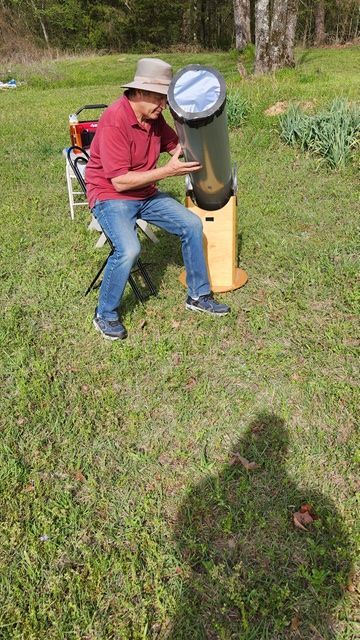
I am all setup and ready for the eclipse. I plan to use my 8" telescope, with an adapter to hold my cell phone over the eyepiece so I can get images of the moon and sun throughout the eclipse. My plan was to take a picture of the eclipse about every 4 minutes through the eyepiece. Then take a movie right before totality to see if I can catch Bailey's Beads. A pattern of light that as you are seconds from totality, the sun shines between the mountains on the edge of the sun. As less and less sun is showing, the sunlight are dots that disappear. These are the Beads.
To see all my eclipse pictures, click here. The following are some of the pictures that are in the eclipse sequence on the webpage mentioned at the beginning of this paragraph.
The forecast was to be Mostly Clear. This means that there is more sun shining than clouds. At 10 AM, this is what the sky looked like. We were all optimistic that we would get to see some of the eclipse, if not all.

John Bozeman and his setup. Mike Roos and his setup.
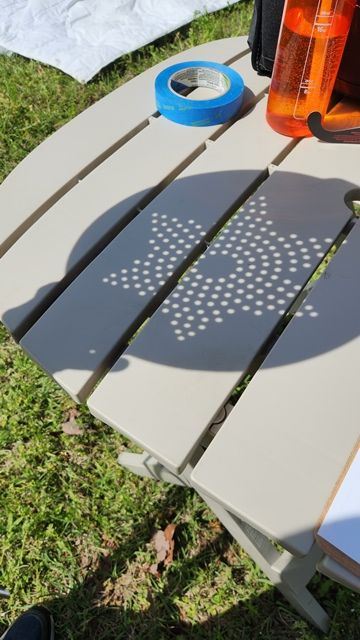
I plan to use this collinder to get images of the sun during the eclipse. This is the image before the eclipse started. The right picture is just before the eclipse started at 12:30 PM. It was threatening to send these large clouds out of the south during the eclipse.
The eclipse starting
Collinger view of the top right sun image. Pretty cool.
There were two of us from Colorado, Mike Roos and myself. There were three people from Tulsa, OK. Left to right, Nancy and Gerald Miller, Rod Gallagher and Mike Roos. I've met Gerals and Rod several times at the Okie-Tex Star Party.
One of the images showed these puffy clouds driftinf across the sun. It was disappointing, but I could work with this sky. This was the last cloud to drift in front of the sun for the remainder of the eclipse.
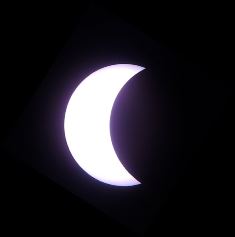
Sun-Moon image and the resulting collinder view.
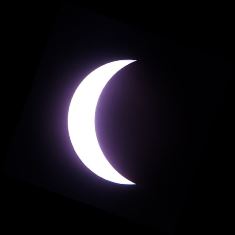
Sun-Moon image and the resulting collinder view.
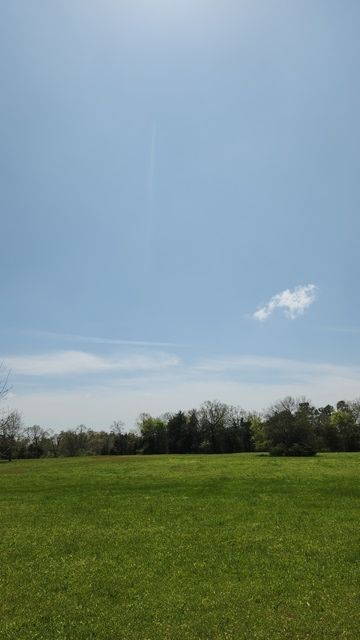
The sky cleared up beautifully.
As totality approached, the light from the sun made the ground look different. You can see the intensity of the light is less and the color has more yellow in it.
Three minutes to Totality Movie
Some views of the sun as it went into totality. The last picture shows the end of Bailey's Beads.
My total eclipse image. At this point, you can take off all the protective filters and your eclipse glasses and look at the sun directly. You can see the corona glow. The dot to the lower right is the planet Venus. Jupiter is to the upper left of the sun and out of this frame. We didn't see the comet which should have been just to the left of the sun.
The corona was easy to see and the majority of the corona seemed to extend from the sun in the 2 o'clock and 8 o'clock directions. There was some also above and below the sun.
I put in the 10mm eyepiece in my telescope and panned around the edge of the sun to see all the prominences present. It was a cool view. Ihad planned on attaching the phone and adapter to this eyepiece and make a movie. I didn't am am glad I just looked up and enjoyed the view.
During totality, the ground looked like the sun had set and we were in deep civil twilight.
This is a picture I found on Facebook from a friend who took this from Dallas, TX. The red things around the edge of the sun are called Solar Prominences. The large, teepe on on the bottom of the sun was easily seen with just your eye, looking at the sun during totality.
As totality approached, the ground darkened and the temperature drop was very extreme. During the sunshine, it was hot there. As totality approached, you could feel the coldness of the air increase.
Then someone said "Here it comes!". I looked up at the sun without my eclipse glasses and saw the diamond ring. Then I went to the white blanket with my cell phone and movie going and tried to capture the shadow bands as they raced across the blanket. There was a delay and after they started, there were dark lines after dark lines that came from the west to the east. Lots of them. This lasted several seconds and then it was over. These are the coolest things to see.
Just after totality. You can see the ground has a yellow tint to it. This was very close to totality. There was just a thin crescent of the sun left when the ground had this yellow tint.
The clouds stayed away. There was a thin haze inthe sky but did not effect the observations of the eclipse.
I put this white blanket on the ground to capture the shadow bands. We saw then as the sun was seconds from totality and then again as the sun was seconds after totality was over. These were thin, black squiggly lines that raced across the ground and my white blanket. There were lots of them and seem to come in bursts. They are related to refraction in the Earth's atmosphere with temperature and density differences from turbulent eddies swirling around. Their speed is the speed the moon is moving in front of the sun. They were VERY COOL! to see. I had heard about these and we saw them twice during this eclipse.
The shadow bands started a few seconds after I noticed the diamond ring on the sun. This meant totality was over and the moon was egressing from the sun. the shadow bands lasted for several seconds before they were gone.
I tried to take a movie of them. I guess they were too faint and moving too fast for my phone to pick them up.
A complete explanation and a video of some of the shadow bands can be found here, Movie of Shadow Bands on this WikiPedia page. This movie does not do justice for what we witnessed.
I went back ot taking pictures of the sun-moon every 4 min. using the 32mm eyepiece. As the end of the eclipse was about to occur, I took pictures with a shorter time between them. All this can be see on this eclipse summary page.
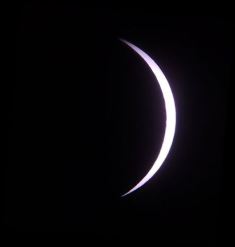
Images of the moon exiting the sun.
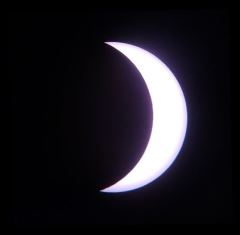
Sun-Moon image and the resulting collinder view.
I watched and photographed the eclipse to the end. The others watched it through their eclipse glasses and recapped the eclipse event.
The last Sun-Moon image and the resulting collinder view.
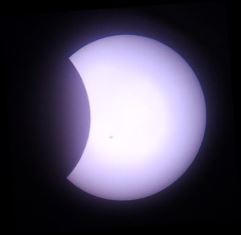
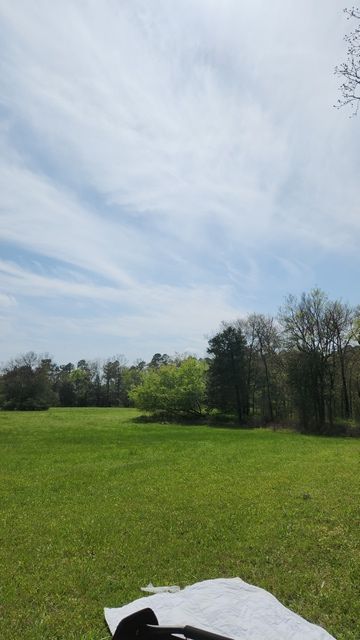
As the eclipse was ending, the clouds from the southeast were thickening.
Eclipse was over at 3:06 PM.
A happy eclipse viewer.
John's son, Adrianne and his fiancee Nancy were also here to enjoy and view the event. This picture and the following four were taken by John Bozeman. It captures the viewers during the event.
Nancy, Gerald and Rod.
Yours truely.
Rod and Mike.
About an hour after the event was over, the clouds started to drift in. It rained early the next morning. Quite a loud and bright thunderstorm.
This is where Mena, Arkansas is located. We were right near the center line of the eclipse. If you are on the center line, you get the maximum time of totality. We were just a bit west of the center line and we got 4 min. 7 sec of totality. In the 2017 eclispe I viewed near Alliance, Nebraska, we had 2 min. 25 sec. of totality. Even with 4 min of darkness, it went fast.
The weather forecast was precited to be increasing clouds, starting at 2 PM. There were a couple of puffy clouds that drifted over the sun early into the eclipse that drifter out of a thick cloud bank along the south horizon. Then that was it for clouds drifting over the sun. All the clouds in the south just disappeared. There was a thin cloud layer all around the sky, but where the sun was, it was mostly clear. The clouds did thicken after 4 PM.
This is a satellite view of the location just before totality started. Mena was just on the edge of clouds that were to the southeast.
This is the satellite view after totality. We were fortunate to be where we were to see the event.
On the way home, I stopped at the Triple J RV Park in Russell, Kansas.
My expenses for the trip. The motorhome got over 8 MPG. I drove into some stron headwinds going both ways.
I left John's place about 7 AM Tuesday April 9, 2024. All the early morning there was a prelonge thunderstorm with lots of heavy rain, from about 2 AM to 6 AM. I was concerned I might get the motorhome stuck in John's driveway. It was predicted to rain like this all that Tuesday at John's.
I got up at 7 AM, cleaned up and left. I pulled the slideouts in the night before so the insides of the slideouts would not get wet. His rock driveway was good and the county road was sider than I remembered. I got out just fine.
There was no wind that morning and the sky was clearing in that part of Arkansas. The no wind made me relax more holding the steering wheel. Once I got inoto the upper part of Oklahoma, the strong headwind returned.
On the drive down to John's, there were strong crosswinds that kept me on my toes.
I pulled into John's place about noon on Saturday. Sunday morning, John gave Mike Roos and I a nice tutorial on how he processes images he finds from the James Webb image archive. He showed me how to use Astrostakk to make great pictures from a video of an astronomy object. The notes from this tutorial can be found here.
Sunday afternoon, we watched the Iowa women play in the national championship.
Mike Roos got his 16" telescope out Sunday night and we looked at a lot of objects from John's yard. He has a great, dark location to view from. I went to bed about 10:30 PM that night and Mike stay observing for another hour.
My thoughts during the trip can be found here.
Here are pictures Mike Roos took during the eclipse.
Other images of this eclispe I liked from posts on Facebook
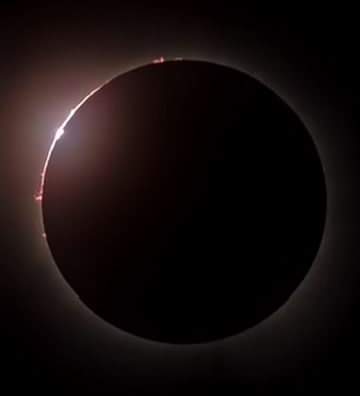
Just a cool picture.
Closeup of solar prominence around the edge of the sun. I think this picture was taken in Dallas, TX. The big prominence at the bottom of the sun was seen with just your naked eye. It was obvious just looking at the eclipsed sun.
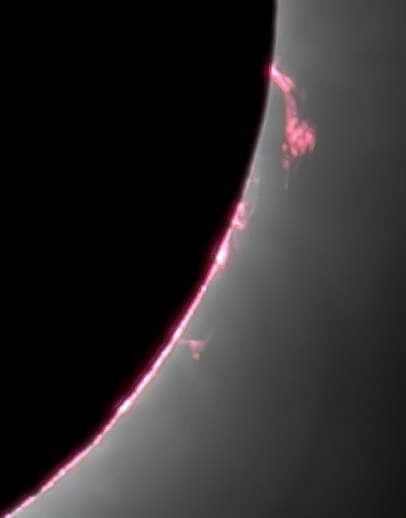
\
Closeup of solar prominence around the edge of the sun.
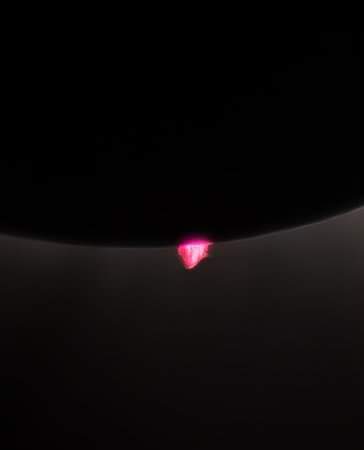
Closeup of solar prominence around the edge of the sun.

Closeup of solar prominence around the edge of the sun.
Closeup of solar prominence around the edge of the sun.
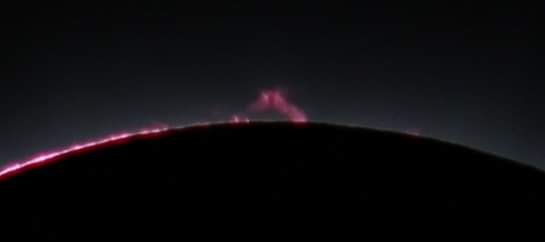
Closeup of solar prominence around the edge of the sun.
Closeup of solar prominence around the edge of the sun.
Solar corona during totality. This is what it looked like for me when I looked at the sun during this time.
Jim Pollock's solar prominences picture.
Joseph Sandy's Diamond Ring picture.
John Leyendecker's picture.
